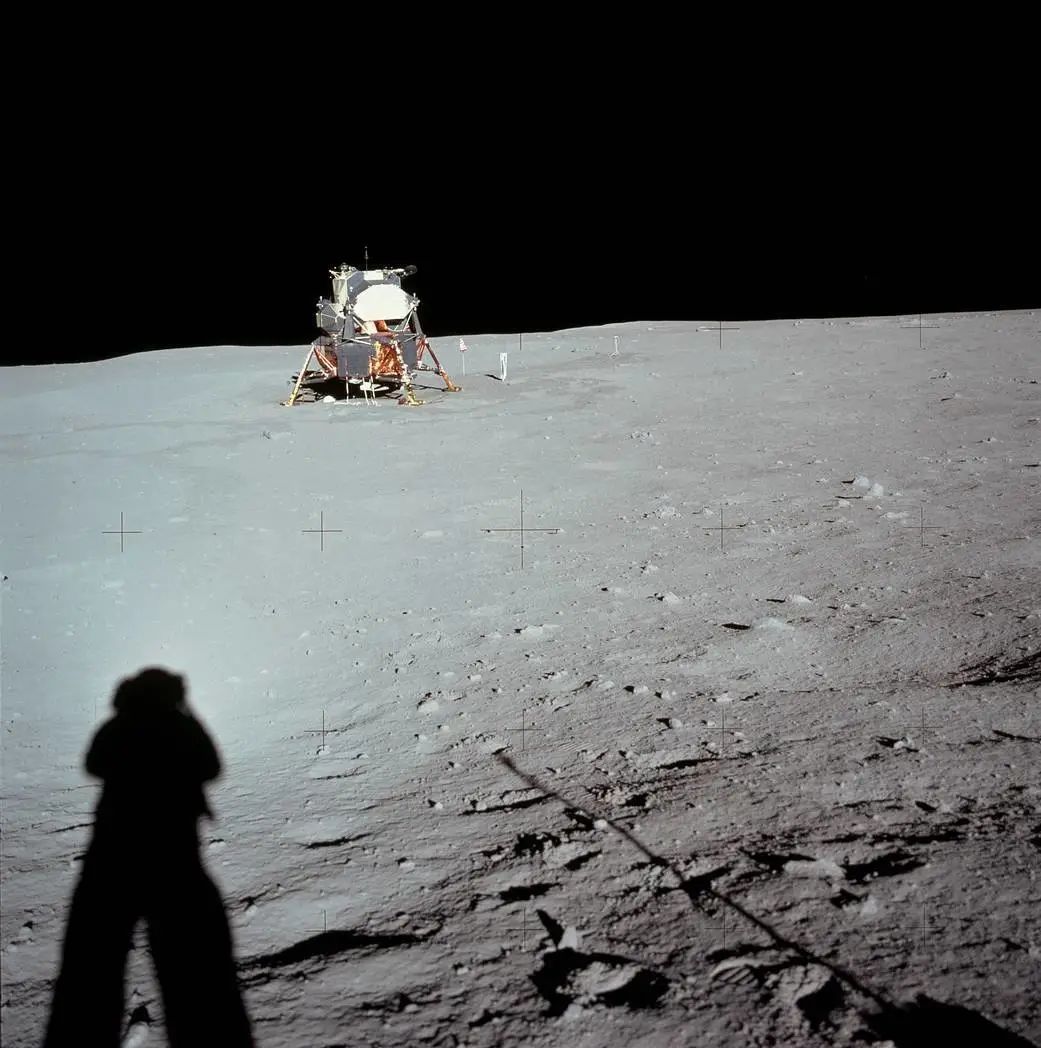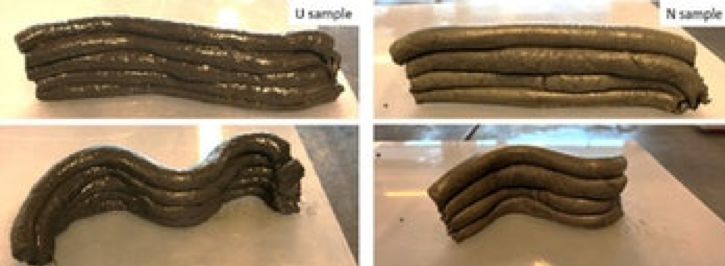Future Moon colonies might be a little stinky.
未来的月球基地可能会有点味道。
It's been more than 50 years since we first landed on the Moon, and humanity is planning a return to the lunar surface pretty soon with NASA's upcoming Artemis mission.
距我们首次登陆月球已经过去了50多年,随着NASA即将执行的“阿尔特弥斯”(Artemis)计划,人类计划不久之后将重返月球表面。
As NASA has repeatedly pointed out when discussing the return to the Moon, this time the voyage will be "to stay." And in order to do that, we need to get creative.
正如NASA在讨论重返月球时反复指出的那样,这次的航行将是“停留”。为了做到这一点,我们需要有创造力。
In the quest to find sustainable solutions to build future colonies on the Moon, a group of scientists are suggesting that astronauts use what they already got– their own urine.
为了寻求在月球上建造未来栖息地的可持续方案,一组科学家建议宇航员使用他们已经拥有的东西——他们自己的尿液。
A study, published this week in the Journal of Cleaner Production, suggests that the main ingredient found in human urine would be ideal to create a mixture for concrete on the Moon. The research is the latest in some other equally creative ideas to help build colonies in space, mushroom houses included, in an effort to reduce the amount of resources astronauts need to bring with them on their journey to the lunar surface.
本周发表在《清洁生产杂志》上的一项研究表明,在人类尿液中发现的主要成分将是在月球上制造混凝土混合物的理想选择。这项研究是其他一些同样有创意的想法的最新进展,这些想法有助于在太空中建立基地,以努力减少宇航员在月球表面旅行时需要携带的资源数量。
The study was carried out in collaboration with the European Space Agency.
这项研究是与欧洲航天局合作进行的。

The team of researchers behind the new study found that urea, an organic compound that is the second most abundant component of urine after water, could be used as a chemical admixture to make concrete on the Moon.
从事这项新研究的研究小组发现,尿液中含量仅次于水的有机化合物尿素可以作为化学混合物在月球上制造混凝土。
"With this study, we have seen that a waste product, such as the urine of the personnel who occupy the moon bases, could also be used," Ramón Pamies, a professor at the Polytechnic University of Cartagena, Murcia, and one of the authors of the new study, says in a statement.
“通过这项研究,我们发现,月球基地工作人员的尿液等废弃物也可以被利用。”穆尔西亚市卡塔赫纳理工大学教授、这项新研究的作者之一拉蒙·帕米斯在一份声明中说。
In order to make the concrete, the urine would be mixed with lunar regolith, the layer of rocky material that covers the Moon's bedrock. The urea in the urine is capable of breaking hydrogen bonds, and can therefore reduce the viscosity of the regolith mixture, making it more moldable before it hardens into its final form, according to the study.
为了制造这种混凝土,尿液将与月球的风化层,也就是覆盖在月球基岩上的一层岩石物质混合在一起。根据这项研究,尿液中的尿素能够破坏氢键,因此能够降低风化层混合物的粘度,使其在硬化成最终形态之前更具可塑性。
As a result, the use of urine would reduce the need to find other resources on the Moon such as water, or the need to carry other resources from Earth to the Moon.It costs around $10,000 to transport just about 0.45 kilograms of supplies from Earth to space, therefore transporting entire construction material would be less than ideal.
结果,尿液的使用将减少在月球上寻找其他资源的需要,比如水,或者把其他资源从地球带到月球的需要。要知道从地球向太空运送0.45公斤的物资需要花费大约1万美元,因此运输整个建筑材料不那么现实。
In order to test out this new method, the team of scientists used a material similar to lunar regolith, and mixed it it with urea to create different concrete cylinders using a 3D printer.
为了测试这种新方法,科学家团队使用了一种类似于月球风化层的材料,并将其与尿素混合,用3D打印机制造出不同的混凝土圆柱体。

The researchers are still not sure whether they would need to extract the urea from the urine, or use the urine as is for the concrete mixture.
研究人员仍不确定他们是否需要从尿液中提取尿素,或者像使用混凝土混合物一样使用尿液。
"The actual water in the urine could be used for the mixture, together with that obtained on the moon, or a combination of both," Anna-Lena Kjøniksen, a researcher at the University of Norway, and one of the authors behind the new study, says in a statement.
挪威大学研究员,也是新研究的作者之一Anna-Lena Kjøniksen 在一份声明中称:“制作混合物时,可以使用尿液中的水分或是月球上的水,或者两者结合使用。”
Previous research has suggested that ancient deposits of ice can be found in the Moon's dark craters at its southern and northern poles, and water could also be used as an important resources for future astronauts on the Moon.
此前的研究表明,在月球南极和北极黑暗的陨石坑中可以找到古代的冰沉积物,水也可以作为未来宇航员在月球上的重要资源。
Abstract: When developing materials for lunar construction, it is essential to minimize the weight of components that have to be brought in from Earth. All necessary ingredients for geopolymers could potentially be sourced on the lunar surface, which is why the material might be an efficient construction material for infrastructure on the moon. Finding a chemical admixture that can be easily obtained on the moon, which can increase the workability while utilizing less water, would be highly beneficial for utilizing lunar regolith geopolymers for lunar 3D printing. Urea can break hydrogen bonds, and therefore reduces the viscosities of many aqueous mixtures. Since urea is the second most abundant component in urine (after water), it is readily available anywhere there are humans. We have therefore explored the possibility of utilizing urea as a chemical admixture for lunar geopolymers. Addition of urea has been compared with polycarboxylate and naphthalene based superplasticizers, and with a control mixture without superplasticizer. When curing the sample containing urea at 80 °C, the initial setting time became longer. The samples containing urea or naphthalene-based superplasticizers could bear heavy weights shortly after mixing, while keeping an almost stable shape. Samples without superplasticizer or containing the polycarboxylate-based admixture were too stiff for mold-shaped formation after casting. Samples containing urea and naphthalene-based admixtures could be used to build up a structure without any noticeable deformation. Initial compressive strength of the samples with urea was higher than for the two other specimens containing superplasticizers, and it continued to rise even after 8 freeze-thaw cycles. Microstructural studies revealed that superplasticizers can influence the formation of additional air voids within the samples.
摘要:在研制月球建筑材料时,最重要的是尽量减少从地球带来的组件的重量。月球地质聚合物的必要成分来自月球表面,这就是为什么这种材料可能是月球基础设施的有效建筑材料。寻找一种在月球上容易获得的化学添加剂,在减少用水的同时提高性能,对于利用月球表面风化层地质聚合物进行月球3D打印具有重要意义。尿素可以破坏氢键,因此降低了许多含水混合物的粘度。由于尿素是尿液中含量第二丰富的成分(仅次于水),并且在人类生活的任何地方都很容易获得。因此,我们探索了利用尿素作为月球地质聚合物化学添加剂的可能性。我们对添加了尿素与聚羧酸盐和萘系增塑剂的样本进行了比较,并与不添加增塑剂的对照混合物进行了比较。当含有尿素的样本被加热到80 °C后,凝固时间变得更长。含有尿素或增塑剂的样本在混合后不久即能承受较大的重量,且形状基本稳定。未加增塑剂的样本,混合后硬度过大,不易成型。含有尿素和增塑剂的样本可以用来建立结构而不引起任何明显的变形。添加尿素的样本的初始抗压强度高于添加了增塑剂的样本,经过8次冻融循环后,初始抗压强度仍持续上升。微观结构研究表明,增塑剂可以影响样品中额外空隙的形成。
原文链接:
https://www.inverse.com/science/astronaut-pee-concrete
(责任编辑:陈潭)

